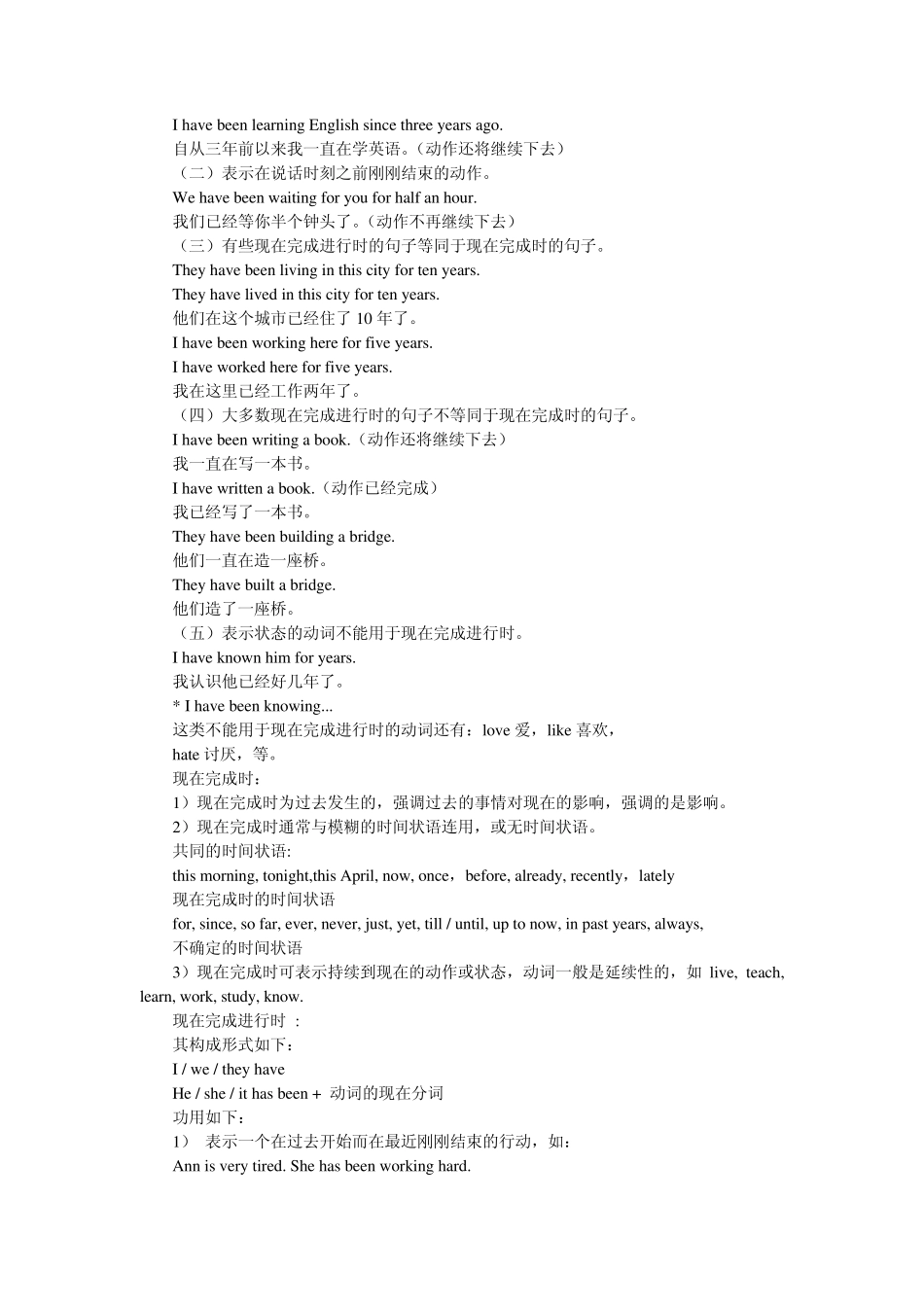现在完成时 动词发生在过去,影响到现在,延续到现在,某种经历。 句型 基本结构:主语+have/has+过去分词(done) ①肯定句:主语+have/has+过去分词+其他 ②否定句:主语+have/has+not+过去分词+其他 ③一般疑问句:Have/Has+主语+过去分词+其他 ④特殊疑问句:特殊疑问词+一般疑问句(have/has+主语+过去分词+其他) 用法 (1)定义:现在完成时用来表示现在之前已发生过或完成的动作或状态,但其结果却和现在 有联系,也就是说,动作或状态发生在过去但它的影响现在还存在. I have had no money to spend now.(现在我没有钱花了.) Jane has laid the table.(简已经摆桌子.) Michael has been ill.(现在仍然很虚弱) He has returned from abroad. (现在已在此地) (2)定义:现在完成时可以用来表示发生在过去某一时刻的,持续到现在的情况,常与for,since 连用. Mary has been ill for three days. I have lived here since 1998. 注意:1.现在完成时不能单独与准确时间连用, 如 yesterday(morning、afternoon),last(morning、afternoon)等,除非与 for,since 连用. 2.现在完成时往往同表示不确定的过去时间状语连用 如 already, yet, just, before, recently,still, lately等: He has already obtained a scholarship. I haven't seen much of him recently (lately). We have seen that film before. Have they found the missing child yet ? 3. 现在完成时常常与表示频度的时间状语连用, 如 often, sometimes, ever, never, twice, on several occasion 等: Have you ever been to Beijing I have never heard Bunny say anything against her. I have used this pen only three times. It is still good. George has met that gentleman on several occasions. 4. 现在完成时还往往可以同包括现在时间在内的时间状语连用, 如 now, up to these few days/weeks/months/years, this morning/week/month/year, just, today, up to present, so far 等: Peter has written six papers so far. Man has now learned to release energy from the nucleus of the atom. There has been too much rain in San Francisco this year. The friendly rel...


